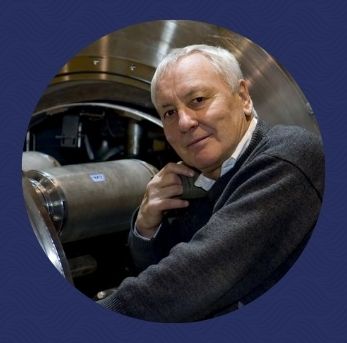BSc And PhD Physics. Class of 1963. Physics Pioneer. Particle Smasher. Higgs Boson Hunter.
Lyn “the Atom” Evans. Is a renowned Welsh Physicist. Since his graduation Lyn has retained his connections with the University, collaborating with staff and welcoming visiting groups from the University to CERN.
Lyn, was the project lead, responsible for building the world’s largest and most expensive science experiment, the Large Hadron Collider. We caught up with Lyn to ask him a few questions.
Lyn, you joined Swansea University in 1963 to study Pure Mathematics, Chemistry and Physics. What are your recollections of Swansea University at that time?
I remember the physics department was in a wooden shed roughly where Taliesin Arts Centre is now. The chemistry department was new and it had the best reputation in Wales. So, when I decided on Swansea I initially chose to focus on Chemistry and not Physics
You eventually switched your focus to Physics and graduated from Swansea with a PhD in Physics in 1970. How did you get involved with CERN?
There were already quite strong links between Swansea and CERN starting with Eifion Jones, who joined in 1959. My PhD supervisor Prof Colyn Grey Morgan was on sabattical at CERN so I joined as a Fellow, with a one-year contract.
"It proved to be more difficult than I expected."
You got involved with the Large Hadron Collider (LHC) in 1994. Can you tell us anything about the development of the LHC?
The first technical paper I wrote on the rough design of the LHC was in 1983 but it was not at all ripe for approval. Then in 1993 the political will changed and there became a very strong interest in the scientific community to pursue this kind of particle physics.
The purpose of the LHC is to help answer some of the most fundamental open question in physics, in particular the interaction between quantum mechanics and general relativity. The LHC is a collaboration of more than 10,000 scientists, hundreds of universities and laboratories and more than 100 countries. I was appointed by the CERN Council as the Project Director, responsible for its design and construction. The build took 14 years, from 1994 when the project was formally approved, until 2008 when it first went live. It proved to be more difficult than I expected.
What does the LHC do?
The LHC is a proton=proton collider with a centre of mass energy of 14 TeV. It makes massive use of superconductivity with powerful magnets cooled to 1.9 degrees Kelvin *cooler than deep space*. The protons collide producing enough energy to recreate conditions a billionth of a second after the big bang. When operational the energy carried by the two beams reaches 724MJ, this is the equivalent to 173 kilograms of TNT. Seven detectors placed at the intersection points are where we run the experiments to investigate the collisions.
Now that the Higgs Boson has been found, what’s next for particle physics?
The search for the Higgs Boson was the first priority on our list and the machine was designed to find it, whatever its mass. Now we must study its properties in detail as well as searching for new physics that could explain some of the deep questions remaining. These include the asymmetry between matter and antimatter that is responsible for our very existence. Also the nature of dark matter and dark energy.

